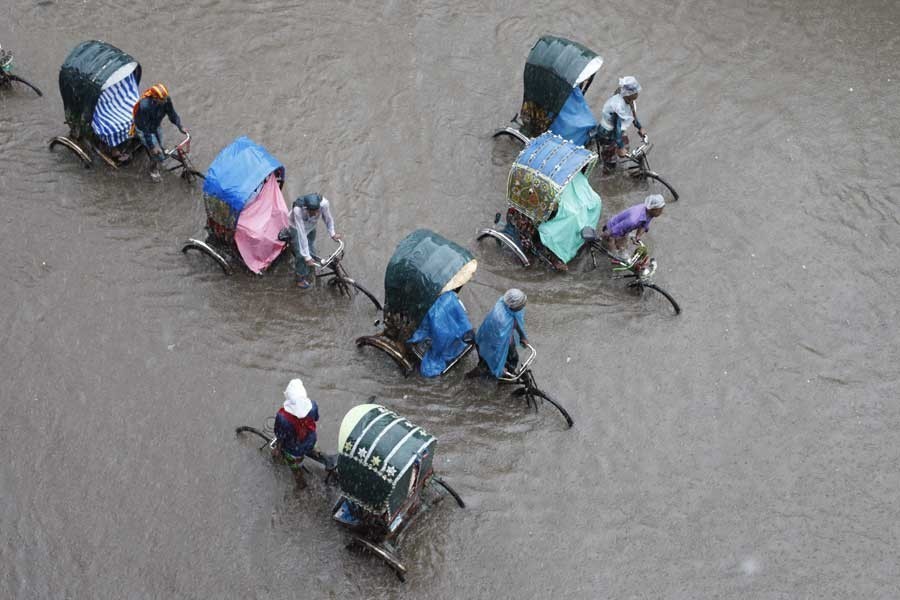To speak without mincing words, far from becoming free of the ill repute of remaining waterlogged during monsoon, the infamy only gets deep-seated on capital Dhaka's image as a historic city. To many, it might seem a height of absurdity upon being told that the 400-year-old city once took pride in its network of canals. Those were dug by the colonial authorities in charge of the city to flush rain water into Dhaka's four surrounding rivers. Against this urban feat, the blight of water-logging remained an unknown phenomenon in this fast-spreading city, up to the 1950s.
Few could then believe even remotely that in two to three decades, the menace of Dhaka's water-logging would merge with the city's other bleak features; and that the inundation would return to the sprawling urban areas every year. The thing that troubles both the ordinary citizens, scared of being submerged by stagnant rain water for days and weeks, as well as the urban planners, is the hollow promises of freeing the city dwellers of water-logging and their laidback approach to the problem later. Few city corporations are found in the country these days which can claim to be completely free of water-logging. In the recent past, the port city of Chattogram emerged as the second waterlogged city after Dhaka. The Khulna City Corporation became the third spot to be annually afflicted by water-logging. The list gets longer with the inclusion of awful spectacles coming from Sylhet, Barishal and Rangpur cities' urban areas. Nowadays, upazila-level people are also found mired in yearly water-logging.
Standing on both the banks of Shitalakkhya River, the Narayanganj river-port city is recognised as one of the oldest urban centres in Bangladesh. The bustling city has no dearth of big-city maladies --- protracted water-logging being one of them. Though wisely planned by their respective early administrations, the style of work by the latter, especially those not sufficiently skilled in handling water management and rain-water drainage has apparently invited sufferings for people under the newly created city corporations. Following the capital, the yearly water-logging ordeals keep chipping away at the development projects undertaken in the country's small cities. Rangpur, Cumilla, Barishal, Jashore and Bogura are among these cities stricken by monsoon water-logging. The large and small cities in the West these days are also increasingly afflicted by stagnant flood waters. Thanks to untimely hurricanes and flash floods in central Europe, China, Japan and some Southeast Asian countries, submersion of localities is fast assuming a global character. Climatologists link these urban inundations to the impacts of global warming. Most of these inundations do not fall in the category of water-logging. But, nonetheless, the flooded homesteads and streets continue to bring life to a standstill, for brief periods though. Prompt rescue operations and technological excellence in dealing with urban floods and water-logging come to the cities' rescue.
Though vulnerable, Bangladesh has yet to undergo the climate change fallout on wider scales. But it has its age-old perennial problems induced by sections of unscrupulous people. In utter nonchalance, they go ahead with grabbing floodplains, filling city canals dug for flushing out rain water, encroaching on rivers' foreshores and myriad types of irregularities. These mindless practices have now been replicated across the country. Given their extent of water-logging sufferings inflicted by the veritably unstoppable syndicates on people in Dhaka and the other cities, the menace is feared to stay on. It's only the government's top policymakers who can free Bangladesh cities from water-logging which is on way to becoming a national bane.


